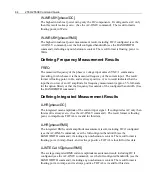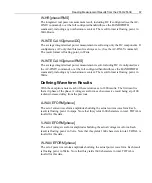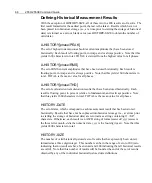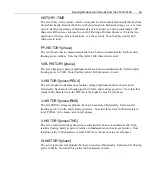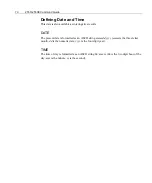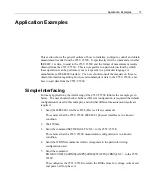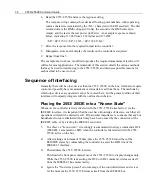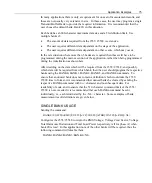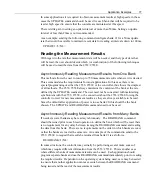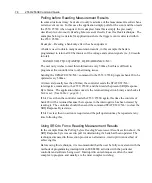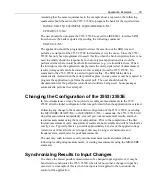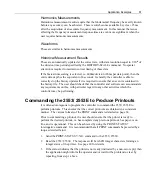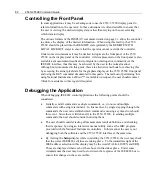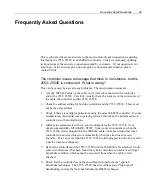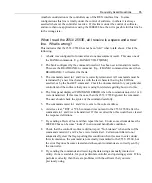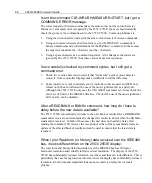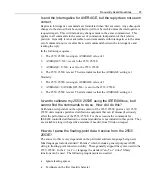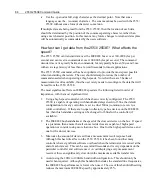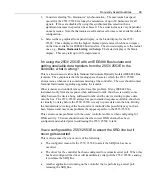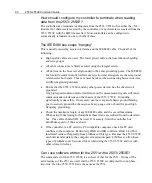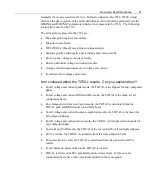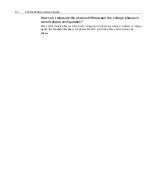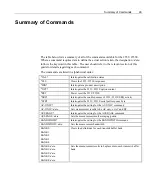
78
2553/ 2553E Command Guide
Polling before Reading Measurement Results
In some situations it may be desired to only read some of the measurement results when a
certain event occurs. In this case the application simply polls for the event and then reads
the 2553/ 2553E when required. In its simplest form this is simply the previously
described
Asynchronously Reading Measurement Results
from One Bank
technique. The
examples below give details for applications where the trigger event is detected within
the 2553/ 2553E.
Example –
Reading a bank only after it has been updated.
A bank is used to obtain many measurement results, in this example the bank is
programmed to return all 40 harmonics of the voltage and current signals (i.e., 80 results
in total).
BANK0=VOLTS[1:40]/AMPS[1:40];READBANK=0<NL>
The user only wishes to read this information every 500ms, but this is difficult to
program at the controller due to other timing issues.
Sending the UPDATE0=50<NL> command to the 2553/ 2553E programs bank #0 to be
updated every 500ms.
At intervals (usually less than 500ms) the controller sends the STATUS?<NL>
interrogative command to the 2553/ 2553E, and then reads the present SRQ Response
Byte Status. The application then converts the returned integer into binary and checks if
bit 2 is set. (See
Table 1, page 16.
)
If bit 2 is set then the controller reads the 2553/ 2553E again, this time the contents of
bank #0 will be returned because the response to the interrogative has been cleared by
reading it. The controller should then send the command STATUS=0<NL> to clear the
SRQ Response Byte status.
If bit 2 is clear then no action is required and the poll operation may be repeated at any
time following this.
Using SRQ to Force Reading Measurement Results
In the example from the
Polling before Reading Measurement Results
section above, the
SRQ Response byte was used to poll for determining if a bank had been updated. The
technique discussed in this section provides an alternative, interrupt driven method of
achieving this.
Before using this technique, it is recommended that the user be fully conversant with the
methods of programming interrupt driven IEEE4888 activities with the particular
controller and software being used. Interrupt driven techniques are often the most
complex to program, and usually are the most complex to debug.
Summary of Contents for Xitron 2553
Page 1: ...IEEE488 COMMAND GUIDE 2553 2553E Three Phase Power Analyser ...
Page 2: ......
Page 10: ...10 2553 2553E Command Guide ...
Page 38: ...38 2553 2553E Command Guide ...

